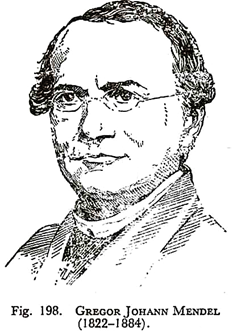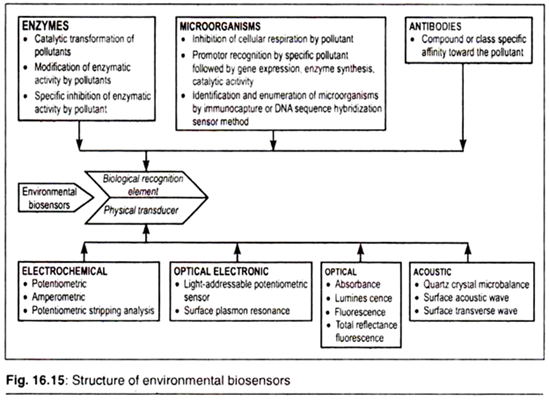ADVERTISEMENTS:
In this article we will discuss about:- 1. Meaning of Heredity 2. Mechanism of Heredity 3. Laws.
Meaning of Heredity:
The offspring’s of any particulars species resembles its parents in a general way. The young of cats are always kittens and never puppies. With respect to details, however, there is a lot variation. No kittens are exactly alike. Some may be black, others white, and still others may have a mottled fur.
In some instances the young may resemble one of their parents or they may have characteristics similar to those of their grand-parents rather than their own parents. This passage of characters from one generation to another is called inheritance or heredity. It is resemblance based upon descent.
ADVERTISEMENTS:
Heredity may be defined as the occurrence in the living organisms of qualities that are derived from their ancestors. Heredity includes not only physical but also physiological qualities. These qualities may be either expressed or they may be latent in the offspring.
Differences among members of any particular species are spoken of as variations. These may be fluctuating or phenotypic variations which depend upon environmental factors or these may be germinal or genotypic variations which are not influenced by the environment.
The phenotypic variations are not heritable, whereas the genotypic variations are handed down to the progeny from one generation to another. The science of Genetics seeks to account for the resemblance or difference between the young and its ancestors. It is concerned with the heritable or genotypic variations of an individual and with laws governing the process of inheritance.
Mechanism of Heredity:
Since higher organisms reproduce sexually and since the sperm and the egg are the only materials which pass from the parents to the offspring, the mechanism of heredity must be located in the gametes. Since only the head of the sperm enters the egg and since the head is the nucleus of the sperm it is reasonable to state that the nucleus of the male gamete is the bearer of paternal characters.
ADVERTISEMENTS:
The egg contains not only a nucleus but also some amount of cytoplasm. So the matter is not clear in this case, but it may be assumed that the maternal and paternal characteristics are handed on to the new individual in the same way.
It has been proved by experiments that:
(1) Mature eggs caused to develop by parthenogenesis produce individuals with only maternal characteristics;
(2) An egg which is first deprived of its nucleus and then fertilized by a sperm produces an individual with only paternal characters. The results of these two experiments confirm the view that the transmission of hereditary characters depends upon the nucleus.
Modern geneticists have observed certain ultra-microscopic particles called genes which are arranged in a linear series upon the chromosomes of the gametes. The genes are composed of special kinds of nucleoproteins whose chemical and physical properties are obscure.
They appear as beads or cross bands upon certain chromosomes. A gene is regarded as a factor for a single heritable character. It is the unit of inheritance that is transmitted from the parents to the offspring, and is responsible for a particular character, such as colour of the eye or texture of the hair.
A gene always acts by interaction with other genes, the cytoplasm, and the environment. Recently Miller has been able to produce gene mutation in the fruitfly Drosophila by exposing them to the bombarding action of the X-rays.
Normally gene mutations occur during meiosis by random sorting of chromosomes —any single gamete receiving either one or the other of each homologous pair. Thus gene mutations are the real cause of heritable variations. Phenotypic variations are not inherited.
Laws of Heredity: Mendelism:
Experimental studies concerning the way in which characters are inherited was first undertaken by an Austrian monk, Gregor Johann Mendel (1822-1884). He chose the garden pea, Pisum sativum for his observations and spent 2 years in selecting pure stocks having distinctive and contrasted characters.
ADVERTISEMENTS:
He performed numerous experimental crosses by artificial pollination, each of which was carried through three or four generations, and kept a careful record of all plants and seeds of each kind that was produced in the course of his studies. From these data Mendel deduced three most important laws of heredity. His research was published in an obscure journal in 1866 and was soon forgotten.
It was brought to world-wide fame in 1900 when De Vries and two other workers arrived at the same conclusions independently of one another. So Mendel’s laborious works, which formed the very basis of genetics, received recognition long after his death.
Mendel believed that there were unit carriers of heredity which occurred in pairs. One of each pair came from the female parent and the other from the male parent. These unit carriers are now called genes. They are situated in pairs on the homologous chromosomes, one of which is derived from each parent at the time of fertilization.
Mendel selected pure plants having contrasted pairs of characters, for example, tall or dwarf stems, yellow or green cotyledons, smooth or wrinkled seeds. When he crossed a green with a yellow pea, he found that all the offspring, in the first generation or F1 gene- radon, were yellow. Similarly the offspring were all tall when a tall variety was crossed with a dwarf one.
ADVERTISEMENTS:
This led him to the law of dominance which states that amongst the contrasting characters (genes) one is dominant and the other is recessive. In other words, if an individual has one dominant and one recessive gene, it always exhibits the dominant trait.
Such contrasting pairs of genes are designated as allelomorphs or simply allels. It must be noted that intermediate forms such as yellow-green were never met with in pure crosses.
Mendel’s original pure stocks were all homozygous; this means that each individual had like units or genes in both the chromosomes of a homologous pair. To be more explicit, genes for a particular character, say yellowness, were present in both the chromosomes. The product of crosses were however hybrids or heterozygous.
ADVERTISEMENTS:
This means that in each pair of homologous chromosomes in the hybrid, the genes are unlike, one of them containing the dominant gene and the other containing the recessive gene. The hybrid, however, exhibits the dominant trait.
When Mendel crossed his hybrid yellow peas obtained by crossing pure yellow with pure green, he found that in the second gene- radon or F2 generation the proportion of yellow to green was 3:1. Of the three yellow peas in the F2 generation one was pure yellow but the other two were hybrids with dominant trait. The only green pea obtained in this experiment was pure, having two genes for greenness.
This led Mendel to postulate his law of segregation, which states that the unit characters or genes preserve their individuality in the hybrid state; they separate from each other, in each succeeding generation, to be redistributed in the offspring. The ratio obtained by taking into account one set of contrasting characters or allels is referred to as the monohybrid ratio. (Fig. 199).
In crosses in which more than one characters were Observed (dihybrid crosses) Mendel found that each pair of unit-characters behaved independently of the other pairs. Thus when a yellow smooth pea was crossed with a green-wrinkled variety, all of the first generation were yellow and smooth. If two hybrid plants of this first generation were crossed, all possible combinations appeared.
ADVERTISEMENTS:
Some of the offspring were yellow and smooth, some yellow and wrinkled, others were green and smooth, and still others were green and wrinkled. This led Mendel to the law of independent assortment, because one gene has apparently no influence on another gene for a different character. The discoveries of Mendel form the fundamental basis of genetics and are often referred to as Mendel’s laws of heredity.
It asserts that:
(i) Characters are determined by paired genes, one of which is dominant over the other;
(ii) The genes segregate and redistribute themselves independently of each other from generation to generation;
(iii) During redistribution one gene has no influence on another gene for a different character.


